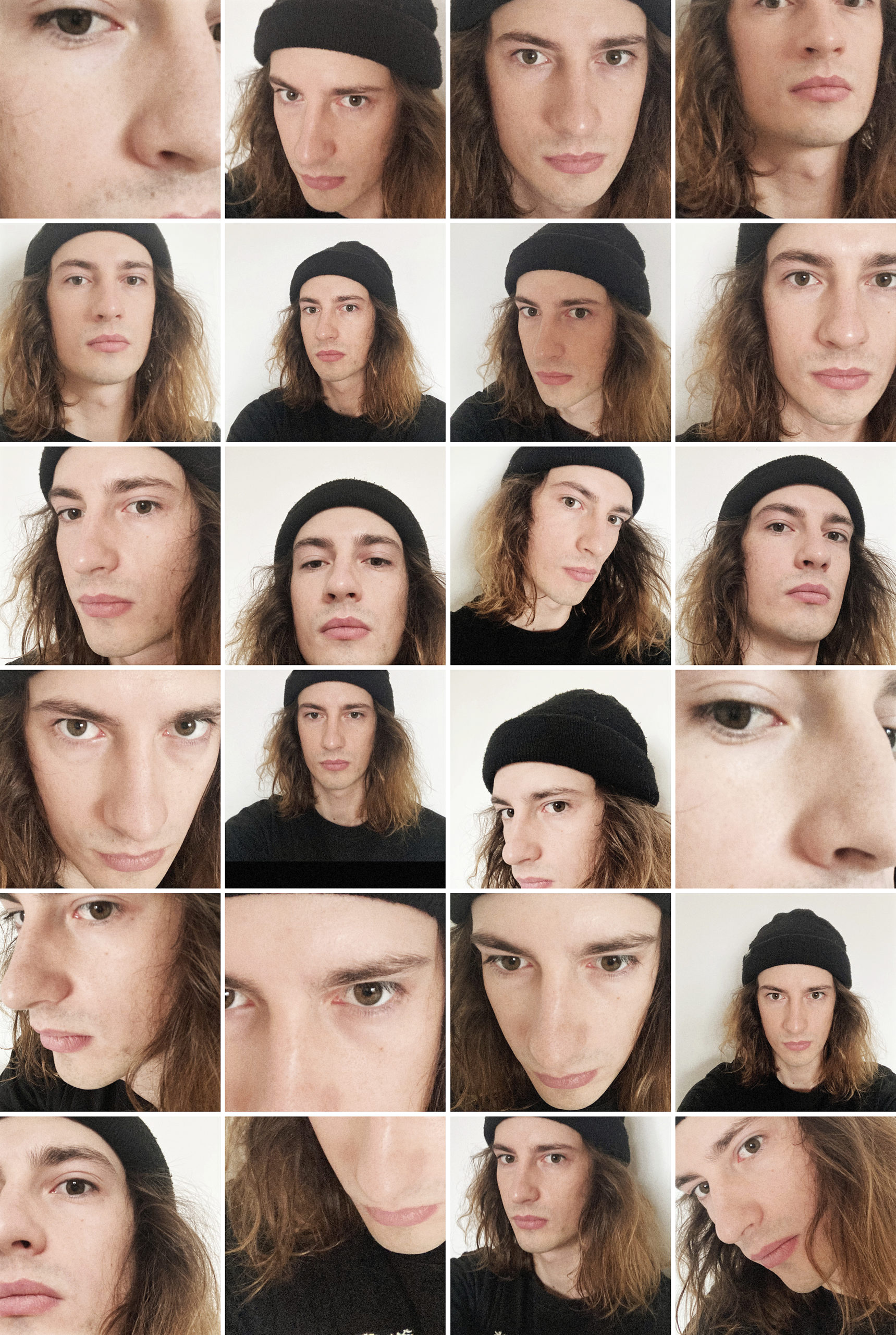

degree piece
minor degree
An installation using neons as multidimensional free spatial forms presenting the topic through relations of geometrical shapes. Blue and red are two primary colours of neons allowing for the use of transparent tubes where the flow of electric current is visible to the observer. The ephemeral effect of the moving stream of light that pursues full stability is caused by the decrease of gas resistance within the glass.
When producing periodic waveforms of low frequency during the creation of electronic music, I experience the operation of analogue effects that change sounds. The synthesizers generating them are commonly used instruments that allow for the modulation of parameters of produced signals. The resulting neons are an attempt to visualise basic waveforms that usually occur during the use of the LFO effect. Each of them, having a different geometrical character, shows a section of the sound of harmonic oscillations with an equal amplitude and a similar period.

Born 1995. A graduate of the Faculty of Sculpture of the Academy of Fine Arts in Warsaw (bachelor’s studies 2015–2018, master’s studies 2018–2020). Works in spatial installations. Participant of group exhibitions: Festival of Digital Art Patchlab, Kraków, 2019; Fern Flowers, Kraków, 2019; Open Gardens of the Artists of Dąbrowa [Otwarte Ogrody Artystów Dąbrowy], Warsaw, 2020 and ONLINE 2020. An exhibition of works by students of the Academy of Fine Arts in Warsaw, Warsaw, 2020.
promotor: Dr hab. Roman Woźniak, Assoc. Prof.
A glass tube, pulsing light and a simple spatial arrangement is the matter that Stanisław Babik has been exploring for several years. He used it consistently during his studies, but its beginnings date back to the family tradition – Babik’s father owned a neon lamp production company. The author has gained basic knowledge of this unique technology and is adept at pressing glass material. When asked a (usually unfortunate) question: ‘Have you done it by yourself ?’, he can say with confidence: ‘Yes’.
The expressive and semantic scope of the neon lamp seems to be quite limited, and Babik paradoxically narrows this field even further. He reduces shapes, colours and spatial models to the most elementary forms. He says: this is how calligraphy began, this is how theoretical solids began, this is how community began, I – towards. The most interesting thing is keeping track of the current and successive steps of Stanisław Babik; he continues to write works rather than creating them in a finite form.
supervisors: Dr hab. Małgorzata Gurowska, Assoc. Prof, Anna Siekierska, MFA
Stanisław Babik pursues the creative process consciously and consistently. He finds his own tools that enable him to speak adequately and concisely. Using his in-depth knowledge of the traditional neon making technique, Stanisław creates living luminous drawings. He translates audio experiences into visual language. The gas filling the glass tubes tells a story of the trembling bodies of waves. It makes us sensitive to what is usually invisible. Abstract Synthesisers provide the recipient with a space for contemplation and their own interpretation. The video piece immerses us in the creative process. The strength of this piece lies in its minimalistic open form and the profound analysis of phenomena.